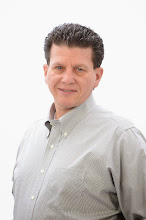Who are those Pentecostals? A better question to start with might be: What is “The Day of Pentecost?”
Pentecost is a national Jewish feast day that was established under the Mosaic law.
“Pentecost means fiftieth and the feast was named accordingly since it took place fifty days after the Feast of the Passover.
The feast was instituted to celebrate the end of the grain harvest; it was a kind of thanksgiving feast.
The Day of Pentecost became significant to Christians because it was the day God chose to pour out His Spirit on His followers. In other words, The Day of Pentecost became the birthday of the church. (See Acts chapters 1 & 2) When Jesus ascended into heaven, He instructed His followers to go to Jerusalem and wait for power. They did as He commanded and were not disappointed. After ten days of prayer and waiting, some astonishing demonstrations of God’s power took place. The Bible tells us there was “a sound as of a rushing might wind”, that there appeared “cloven tongues like as unto fire,” and that “they were all filled with the Holy Ghost, and began to speak with other tongues, as the Spirit gave them utterance.” (Acts 2:1-4) The church service that ensued was spontaneous, noisy and joyful. The whole town noticed. Some people thought they were drunk. Peter preached a powerful sermon, explaining that this outpouring of the Holy Spirit had been predicted by the prophet Joel. Thousands of people became believers on that day.
Modern day Pentecostals are quick to identify the Day of Pentecost as their roots. More recently, however, the movement was fanned into flame in the early 1900s. People like Charles Parham and his Bible school students began studying the Bible to determine what was the primary evidence of the infilling of the Holy Spirit in the first century Church. These pioneers read the accounts in Acts 2, 8, 10 and 19 which recorded the conversion experience of early believers. They noticed that the Bible almost always clearly stated that these people spoke in “other tongues” when they were baptized with the Holy Spirit.
Inspired by these re-discovered conversion accounts, people from many faiths began seeking to know God in the same measure as Jesus’ disciples, Jesus’ mother, and other first century Christians knew Him. Soon many people began to experience this “infilling.” Powerful meetings broke out in places like Houston, TX, Los Angeles, CA, and Topeka Kansas. A meeting on Asuza Street in Los Angeles became particularly influential in spreading this new “fire”. The Pentecostal/Charismatic movement has since jumped denominational lines and affected all of Christianity.
“Many call Pentecostalism Christianity's most notable development of the last 100 years, and its phenomenal growth could make it the biggest church story of the next century as well… Scholars estimate that there are 10 million Pentecostals in the United States and 400 million to 600 million worldwide, or about one-quarter of the world's Christian population. The movement is far larger outside the United States, in Latin America, Africa and Asia, where Christianity is experiencing its greatest growth.” (www.religionlink.org/tip_060130.php)
Pentecostal churches tend to focus on vibrant singing and worship, anointed preaching, and a whole-hearted response to the “moving” of the Holy Spirit. Their services are often marked by divine healing, sincere commitment, and times of prayer in which people continue to experience the infilling of the Holy Spirit, initially evidenced by speaking in a language they do not know. This dynamic interaction with the Almighty God makes church a powerful and interactive experience. Perhaps that is why it is the fastest growing movement in the Christian community.
Who are those Pentecostals? They are people who want the twenty-first century church to be just as powerful and responsive as the first century church. May 27, 2007 is Pentecost Sunday. You might consider furthering your religious education by visiting a Pentecostal Church on Pentecost Sunday.
# posted by John W. Hanson @ Friday, May 11, 2007


